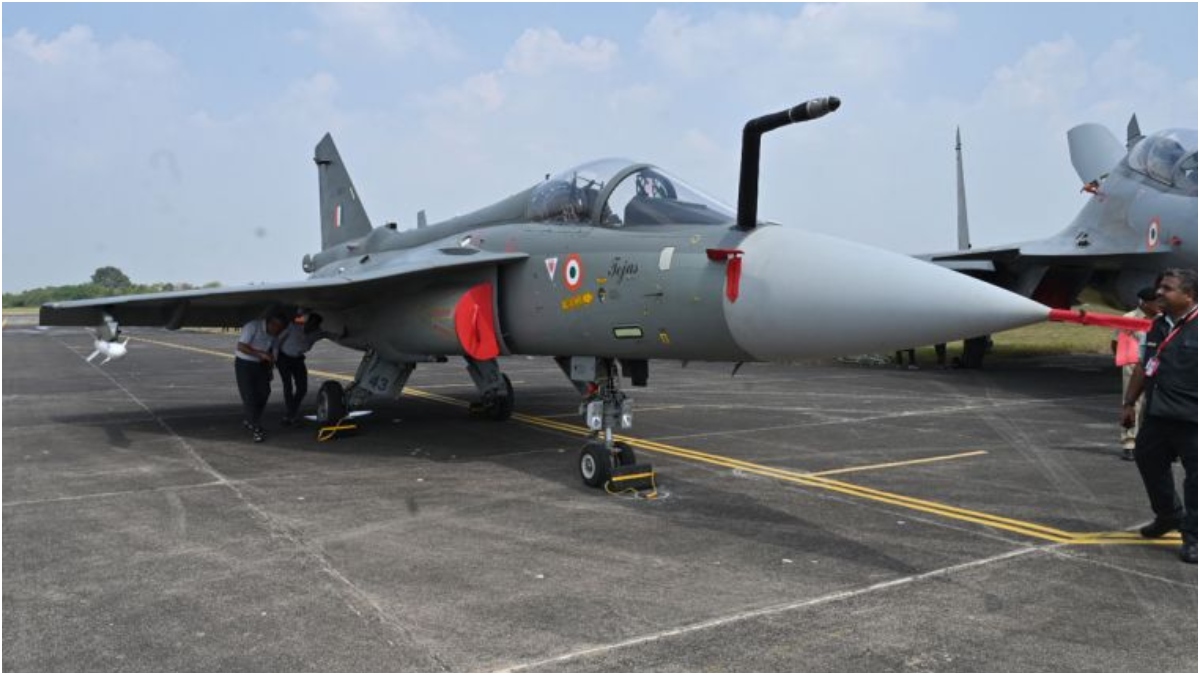LCA Tejas of the IAF: 5 things to know about HAL's iconic aircraft that crashed at Dubai Air Show 2025

A Tejas fighter jet of the Indian Air Force (IAF) crashed during an aerial display at the Dubai Air Show on Friday. The pilot of the single-seater aircraft was killed in the accident, the IAF said.
Visuals of the crash aired on various TV channels showed the jet losing altitude and then crashing to the ground, engulfed in a ball of fire, to the horror of spectators. Footage from the site showed black smoke rising behind a fenced airstrip.
ALSO READ | How did IAF's Tejas aircraft crash during Dubai Air Show 2025? Latest updates as horrific videos appear online
This is the second known crash of the fighter jet, which is powered by General Electric engines and is crucial for India's efforts to modernise its air force fleet of mainly Russian and ex-Soviet fighters. The first crash was during an exercise in India in 2024, Reuters said. Dubai's government shared a photograph of firefighting teams dousing smouldering wreckage. It said emergency teams were managing the situation on-site. The crash happened during the last day of the air show, the Middle East's largest aviation event, which started on Monday.
What is India’s HAL Tejas?
Tejas Mark (Mk) 1 is a 4.5-generation, lightweight, high-agility supersonic multi-role fighter aircraft, which entered service with the Indian Air Force (IAF) in July 2016. It is an all-weather tactical fighter, available in two variants — specifically, a single-seat fighter and a two-seat training aircraft.
CHECK OUT HAL TEJAS BROCHURE HERE
The Defence Research and Development Organisation’s (DRDO) Aeronautical Development Agency (ADA) led the design and development of the fighter plane under the Light Combat Aircraft (LCA) programme. Hindustan Aeronautics Limited (HAL) was the prime industrial contractor for the project.
What do you need to know about its development?
The first demonstrator aircraft within the LCA programme made its maiden flight in January 2001. The second flight happened in June 2002. Tejas successfully fired an infrared-seeking air-to-air missile in December 2013 and achieved IOC status, a 2024 report by Air Force Technology said. The prototype with an advanced electronic warfare (EW) suite developed by the DRDO also took flight during the period, it added.
ALSO READ | Why HAL's LCA Tejas Mk1A rollout will start slow despite the major engine deal with GE
The Defence Ministry told the Indian Parliament in 2021 that the aircraft is no longer considered a replacement for the MiG-21 and is part of a general IAF fleet modernisation programme.
How big is a HAL Tejas?
The aircraft reportedly has a length of 13.20 metres and a wingspan of 8.20 metres, with a wing area measuring 38.40 square metres and a wing loading of 221.4 kg per square metre. It stands 4.40 metres tall and has an empty weight of 5,680 kg. Its maximum take-off weight is 13,500 kg, while the loaded weight is 9,500 kg. The internal fuel capacity is 3,000 litres. The aircraft can reach a maximum speed of Mach 1.6 at an altitude of 15,000 metres and has a ceiling of 16,400 metres. It offers a combat range of 850 kilometres.
What are the salient features HAL Tejas is equipped with?
Tejas fighters are equipped with Martin-Baker zero-zero ejection seats, which allow pilots to eject safely even at zero altitude and zero speed, NDTV said in a report.
Earlier this month, Reuters reported that New Delhi signed a deal on Friday to buy 113 engines from General Electric to power an advanced variant of its home-produced Tejas fighter jets, in a sign of warming ties with the U.S. following months of tariff-induced tensions.
“The aircraft features a night-vision-compatible glass cockpit with zero-zero ejection seats from Martin-Baker (UK). It features dual 76mm × 76mm colour multifunction displays by Bharat Electronics, a head-up display by the government-owned Central Scientific Instruments Organisation (CSIO), and a liquid-crystal return-to-home-base panel with a keyboard,” Air Force Technology said.
ALSO READ | How capable and efficient is India's LCA Tejas Mk1A fighter?
What are weapons HAL Tejas is incorporated with?
The Tejas features a 23mm twin-barrelled GSh-23 gun with a burst firing rate of 50 rounds a second and a muzzle velocity of 715m per second. It can be armed with air-to-air missiles such as the Vympel R-73, as well as air-to-ground and anti-ship missiles, precision-guided munitions, rockets and bombs. The Derby BVR-AAM missile, which can engage targets at a range of 50km, can be fitted to it.
Defence